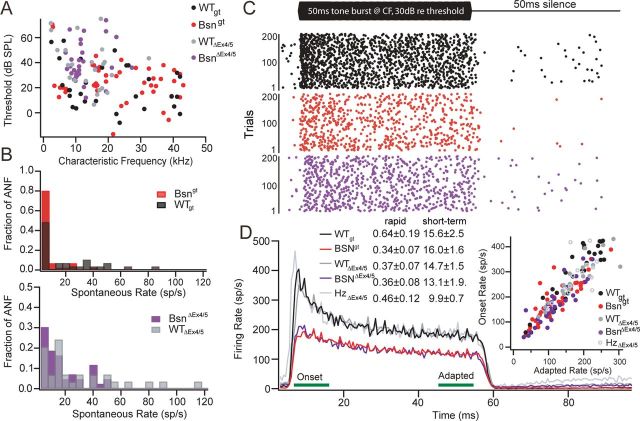Figure 7.
Basic characterizations of SGN responses in vivo. A, Best thresholds of individual SGNs of Bsngt (red, n = 45 SGNs), BsnΔEx4/5 (purple, n = 31), and WT animals (black, n = 29 for WTgt and gray, n = 23 for WTΔEx4/5) as determined from the tuning curves tended to be elevated in both mutants compared with their respective WT controls (p > 0.05). B, Spontaneous spike rates are significantly reduced in SGNs from both mutant strains. C, Illustration of the firing pattern of representative WTgt (black, top), Bsngt (red, middle), and BsnΔEx4/5 (violet, bottom) SGNs in response to 200 repetitions of a 50 ms tone burst presented at CF, 30 dB above thresholds. Each dot indicates a single action potential. D, Averaged poststimulus time histograms of SGN responses show a preserved activation pattern but reduced action potential firing rates in both mutants. Rapid and short-term adaptation time constants (double exponential fit for individual SGNs) were not significantly different. Inset: Onset and adapted rates (averaged in the 10 ms windows indicated by green bars) in all mutant SGNs were in the lower normal range. Responses from HzΔEx4/5 SGNs (light gray line/gray open circles, n = 16) were indistinguishable from WT.

